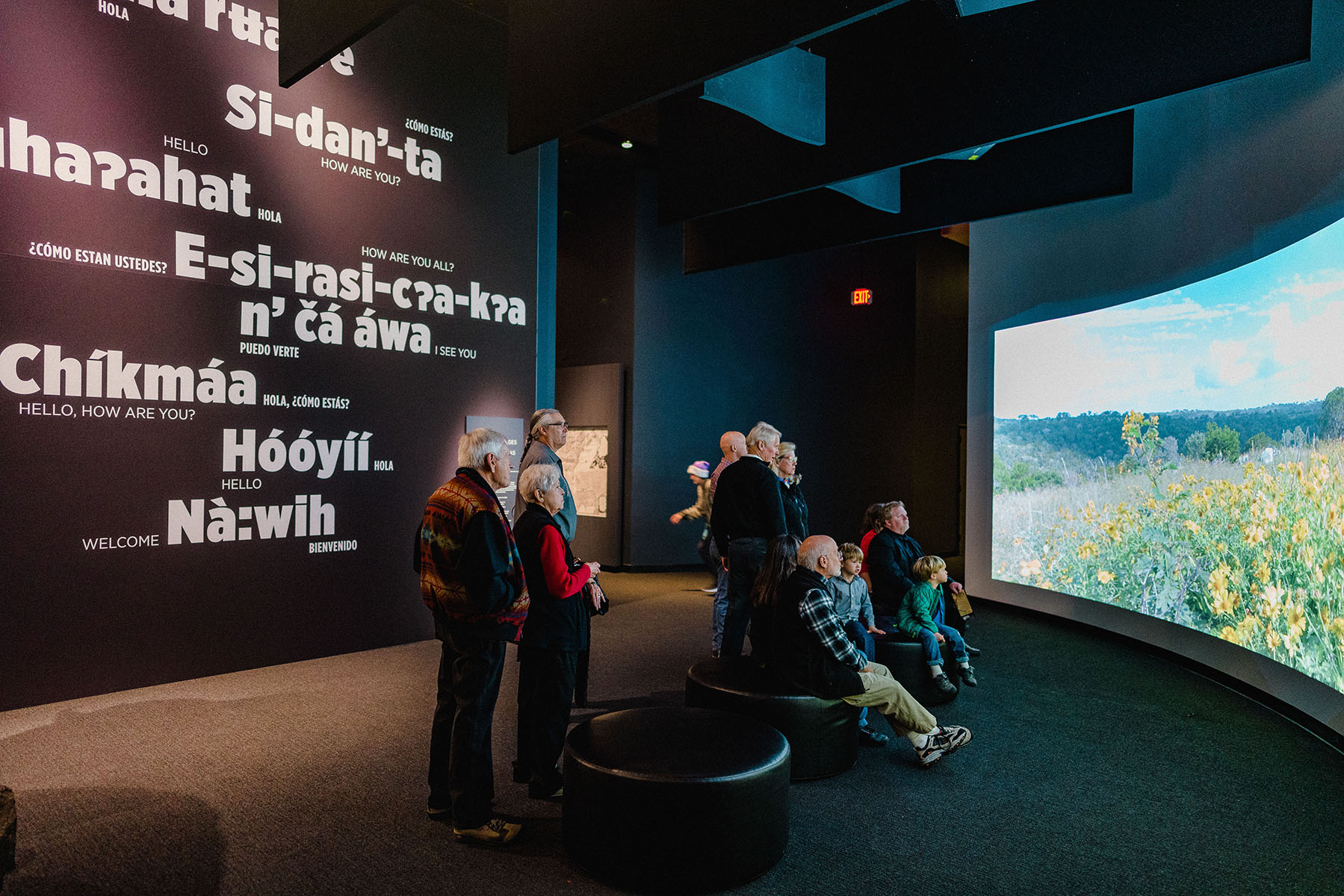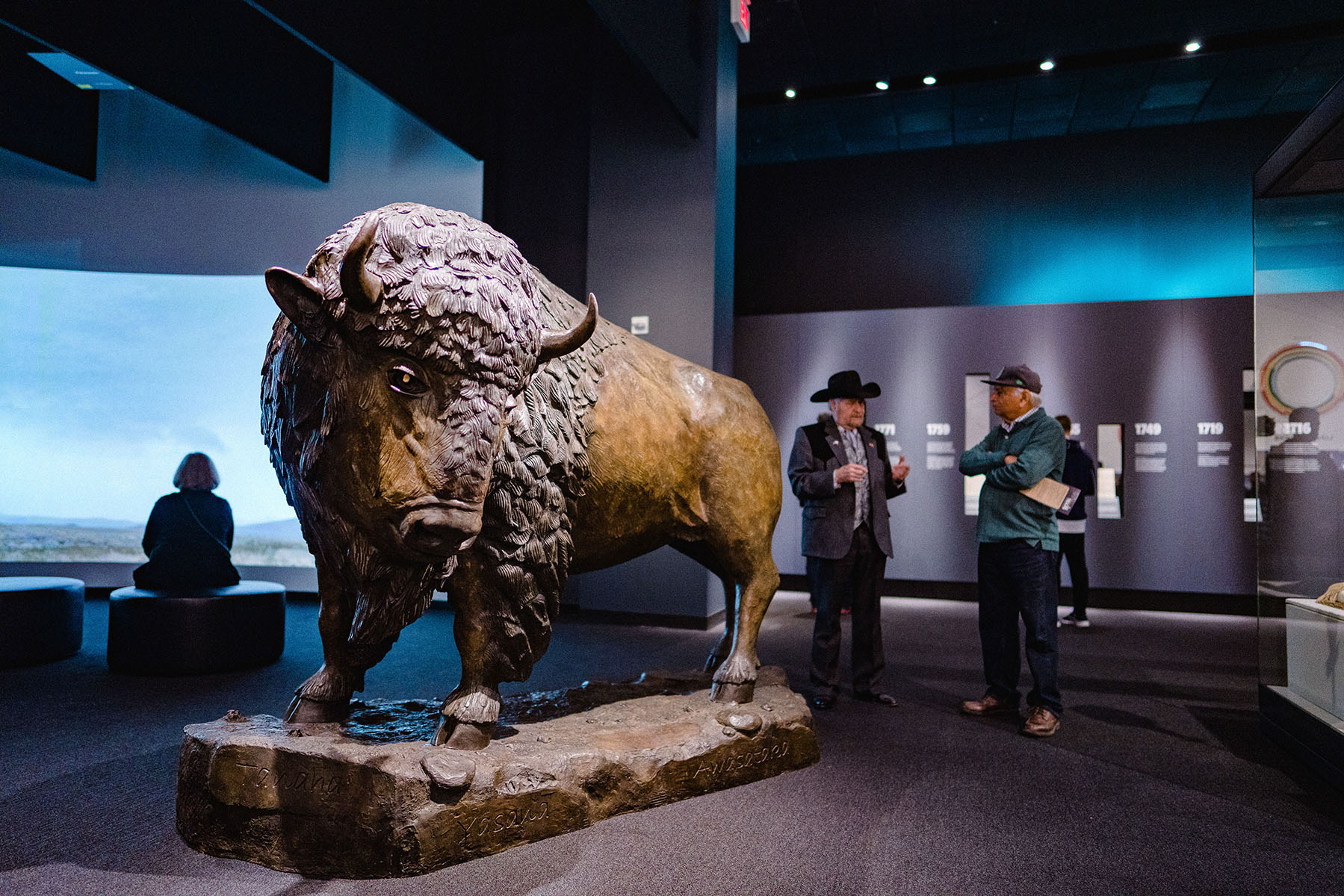The Bullock Texas State History Museum’s mission is to engage the broadest possible audience to interpret the continually unfolding Story of Texas through meaningful educational experiences.
In December 2018, the Bullock Museum opened a new core gallery space, “Becoming Texas,” with a focus on early human habitation of the land now called Texas. The space was designed to engage visitors with more than 16,000 years of Texas history through 1820. In order to achieve this end, the Museum cultivated ongoing partnerships with American Indian nations, tribes, bands, and family groups that had lived or still live in the areas bordered by the modern-day state.
A two-year process of diplomacy, listening, conversation, and collaboration with representatives from seven independent Indian nations led to the museum being able to offer its visitors access to cultural artifacts and stories of origin, triumph, and hardship that provide valuable historical perspectives and cultural insights to visitors. These partnerships also gave the museum a newfound capacity to tell richer and more inclusive stories that engage with and illuminate the impact of American Indians on Texas history.
Visitors needed to understand that Texas has a “deep past” rooted in American Indian culture. To this end, the museum imagined a contemplative, immersive “landscape and language” video and sound environment in a quiet, comfortable space where visitors could sit and reflect on the languages and landscapes of Texas history. Through this environmental design, the museum immersed visitors in a history that was surrounded by early human movement and interaction through landscapes and languages — languages that in the period did not include English or Spanish. Indeed, Texas has for millennia been a complex and ever-shifting landscape of tradition and interactions far different from today.
To generate audio content, the museum engaged in an oral history project that recorded some of the few remaining American Indian language keepers from the former and current tribes of Texas. The recordings of spoken word and song form that were gathered create a valuable resource that both tribes and the museum can access and use. Tribes who contributed to the recordings include Comanche, Lipan Apache, Wichita, Tonkawa, and Alabama-Coushatta.
A central-Texas filmmaker familiar with the vast beauty of Texas’s unique and varied landscapes was engaged to capture time-lapse and real-time high definition footage from 12 different locations.
Sound and video sources were married together in a 14-minute looping experience projected on a 28-foot by 10-foot curved screen using two high definition projectors, short throw lenses, and advanced sound capabilities to allow for visitors to be surrounded by the experience wherever they’re positioned in the space. Recordings of Indian spoken word and song are matched with footage of the environments where those people once lived. Environmental sounds are also matched to on-screen location. A sound system capable of reproducing eight channels of audio provides a hyper-realistic acoustic environment in the darkened space. The viewer feels immersed in the environment with voices and song coming from all directions. Round settees are positioned around the space to allow for visitors to consume the environment at their own pace.
The only text displayed on screen is an Indian nation name visible when someone is speaking or singing. Indian language phrases like “Hello” and “How are you?” are printed on the wall opposite the projection, written using the native alphabets of the American Indian nations. A wall label identifies the singers and speakers by name and tribal affiliation.
The space was designed to serve as a contemplative environment, a “rest stop” at the end of an emotionally challenging exhibition, where visitors can pause and reflect in the ambience of beautiful landscapes and sounds of the land we now call Texas before continuing their journey through the remaining two-thirds of the museum.
The installation performs as designed. Observations of visitors reveal their multi-generational appreciation for the opportunity to sit, look, listen, and converse. Visitors sit alone and with groups, often engaging the long-form 14-minute experience multiple times. It is a conversation space, which is also designed to host educational programming amid a backdrop of unexpected, hard to reach on-foot locations throughout the nearly 270,000 miles in Texas’s present-day borders. Once more, the soundscape and video was developed to be modular, allowing for continual discovery, recording, and presentation of Texas’s “Many Languages.”
Videos:
Full length (14 min.): https://youtu.be/uGAjrdFTNDQ
Abridged (3 min.): https://youtu.be/RTG_e2tFryU
Images:







